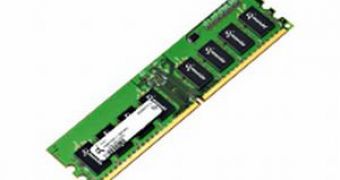A Taiwanese memory chip manufacturer, Nanya Technology, announced that it will start producing its new DDR3 memory modules for PCs, releasing the DDR3 dynamic random access memory (DRAM) in 2008. The company is the fourth chip maker to turn to DD3 products, after Elpida, Infineon and Samsung.
Even if the prototype of the new Nanya PC3-8500 1GB DDR3 unbuffered dual in-line memory module (DIMM) utilizing 512Mb 1066MHz chips was shown during the SemiTech Taipei 2006 conference, there are no devices supporting the new product.
On the other hand, Intel Corp., the world's leader in memory technology, is expected to launch its first chipset for PCs that supports DDR3 memory in the second half of 2007.
"Current DDR3 chips are produced using 90nm process technology, but, when DDR3 enters 'the phase of mass adoption' in 2008, such devices will be manufactured using 70nm fabrication process," declared Pei-lin Pai, Nanya's vice president of global sales and marketing.
DDR3 memory is designed to increase performance and lower power consumption of DDR2 memory utilized today.
Advantages compared to DDR2 (manufacturer's recommendations)
- The components are twice as fast as today's highest speed DDR2 memory products. - The first computer systems equipped with the advanced DDR3 memory technology are expected to arrive in late 2006. - The main advantages of DDR3 are the higher bandwidth and the increase in performance at low power. - The DDR3 SDRAM devices will offer data transfer rates up to 1600 Mbps (megabits per second). - The supply voltage for the memory technology is being reduced from 1.8 volts for DDR2 to just 1.5 volts for DDR3 targeting a work day equivalent of battery time. The voltage reduction limits the amount of power that is consumed and heat that is generated in connection with the increase in bandwidths.

 14 DAY TRIAL //
14 DAY TRIAL //